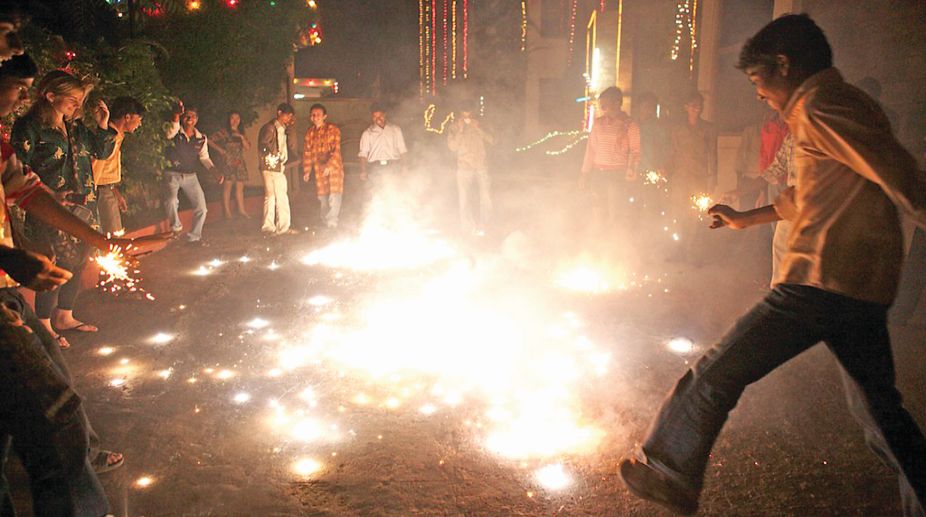Beneficiaries of CAA, Hindu migrants from Bangladesh are all praises for Modi
These Bangladeshis, who came to Pilibhit before 1971, are facing several problems and no respite is seen before the announcement of the CAA.

Representational Image
The Hindu connection between human beings and nature is deemed sacred, but practice reveals otherwise. Major religious festivals in India such as Diwali, Holi, Durga Puja and Ganesh Puja have had a detrimental impact on the environment. In 2014, a study conducted by the World Health Organisation revealed that New Delhi had the worst atmosphere in the world. Last year, India had four of the ten cities with the worst air pollution in the world. Religion has a key role to play in sustaining these pollution levels.
At the outset, one should appreciate the social significance that religion and religious festivals have in the daily lives of Indians. The role of religion in India cannot be overemphasised. It is deeply embedded in India’s social fabric. This is evident from India’s social history, which is marred with communal clashes, riots, and cow-vigilantism.
While Article 25(1) of the Constitution of India guarantees the freedom to practice religion, it places reasonable restrictions upon such practice by subjecting it to public order, health and morality. Furthermore, the Supreme Court of India has categorically held that the right to clean and healthy environment is a fundamental right under the Right to Life guaranteed under Article 21.
Advertisement
Though the questionable constitutionality of these religious festivals and ceremonies might seem apparent, there is a visible lack of political will to contain them. This is evident from the fact that most of the recent legal restrictions of such practices have been judicial and not legislative.
For instance, the Supreme Court’s order of 9 October 2017 temporarily suspended all licenses permitting the sale of fireworks within the National Capital Region of New Delhi, till 1 November 2017. This was done to curb air pollution resulting from the tradition of bursting firecrackers during Diwali. Nevertheless, despite the ban, as per the Central Pollution Control Board, the average particulate matter 2.5 level during the day of Diwali was 397 (mg/cu m) – 6.6 times higher than the required standard and twice as much as the pre-Diwali levels.
Shortly thereafter, a group of traders challenged the Court’s order. While rejecting the plea, the Court retorted by stating that, “Some people are trying to give a communal tinge to our order… but we will consider that as people expressing their anguish at our order.” Significantly, Justice A. K. Sikri, leading the bench, observed, “If someone knows me, I am myself spiritual in these matters, but this is a legal issue” (emphasis supplied). It is not usual for a Supreme Court judge to publicly justify his or her stance by resorting to his or her spirituality. This suggests that there may be an underlying religiosity in India’s judicial system.
We see how difficult it is to make laws controlling environmentally hazardous religious activities. Political parties in India do not wish to disturb the majority Hindu vote-bank, and hence refrain from imposing any significant restrictions upon religious festivities. This is particularly evident with the ruling, pro-Hindu, Bharatiya Janata Party at the centre.
Recently, this was exemplified in Manoj Mishra v Delhi Development Authority, where the concerned ministries of water resources and environment had given their consent to the holding of the World Cultural Festival on the banks of the river Yamuna. While the case is still under review by the National Green Tribunal, the expert committee has claimed large environmental damage to the floodplains in the region.
Furthermore, there is no legislation or regulation on other religious festivals such as Durga Puja and Ganesh Puja. These involve the “visarjan” (immersion) of huge painted idols into rivers and other water bodies. Such mass immersion of idols, which are covered in toxic paints, results in the release of heavy metals such as lead and mercury into the water bodies.
While there is a clear nexus between the practice of religion and environmental pollution in India, judicial activism is only a temporary fix. The government needs to look beyond immediate political considerations to adopt a comprehensive pollution prevention policy. The right to life must trump the right to practice religion.
The writers are, respectively, a fourth year law student and a professor of law at Jindal Global Law School, Sonipat.
Advertisement